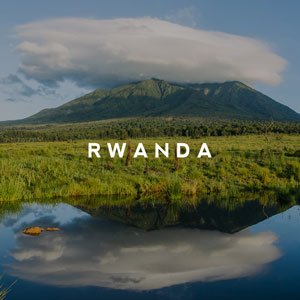
Kenya Country Information
What We Think You Should Know About a Safari in Kenya.
Get all the details here.
Kenya
The stars shine brighter, the sky seems bigger, the flowers smell sweeter, the trees gleam greener. Kenya is vibrant. From the crowded city streets to the wide expanses of untamed earth, Kenya cannot help but glow.
Your flight path into Jomo Kenyatta International Airport will take you directly over Nairobi National Park, one of the few national parks in the world located within a city. If you land during daylight hours, you may even be able to spot a giraffe or rhino from the air. As Kenya’s largest airport, located in the capital city, this is the primary entry point into the country.
Kenya boasts a diverse landscape. Most famous for the Masai Mara, an exceptional safari destination that hosts the Great Migration, Kenya has even more to offer beyond this classic location. In the arid and desert regions in the north, you will see unique wildlife like Grevy’s zebra, gerenuk, and vulturine guinea fowl along with elephants and big cats. The coastal tropics rival any beach location on earth, with the warm, crystal clear waters of the Indian Ocean washing up onto white sandy beaches. The second tallest mountain on the continent, Mount Kenya, is a coveted destination for any adventurer.
The primary cities include Nairobi, the large capital of over 5 million people; Mombasa, a historic trade city on the coast; and Kisumu, which is located on the shores of Lake Victoria on the western border.
-
Official Name: Republic of Kenya
Population: 50 Million
Area: 225,000 Square Miles
National Animal: Lion
National Bird: Lilac-Breasted Roller
Best Known for: Wildebeest Migration
-
Long Rainy Season: April-May
Short Rainy Season: November
Long Dry Season: June-October
Short Dry Season: December-February
Average Low Temp: 55F
Average High Temp: 85F
The warmer dry season takes place from December to March, while the winter dry season is from July to October.
-
You are required to have a visa prior to entering the country, which you can apply for online. In order to apply, you’ll need to have a passport that is valid for no less than six months and a return ticket to your country of origin. Inclusive of application fees, the price of the visa is $51.
Apply for visa online here:
-
COVID-19 Vaccine is required.
Yellow Fever Vaccine is required, if traveling from another African country.
-
Both English and Kiswahili are official languages, but business, education, and government proceedings are done in English, which means most of the population speaks it fluently.
-
KES: Kenya Shilling. Most Tourism Lodges accept USD and tips can be made in either currency.
-
Plug type G, which has three rectangular pins in a triangular pattern operating on a 240V supply voltage.
Fun Fact
The equator runs directly through Kenya.
Borana Wildlife Conservancy is one of the most beautiful spots in Kenya and this lodge is a perfect stopover on the Kenyan circuit. As a rhino sanctuary, you’re guaranteed to see both black and white rhino.
Located in Mara Naibosho Conservancy, this area has one of the highest concentrations of lions in the world, but is also home to cheetah, leopard, elephant, and more, along with 266 bird species.
The backbone of the safari experience is the mobile camp. It follows you around the country and can be set up anywhere. Luxurious, private, and wherever you want it.

Imagine being surrounded by over 1 million wildebeest.
Each year between July and November, over 1 million wildebeest move into Kenya’s Masai Mara ecosystem. This migration from Tanzania’s Serengeti National Park into Kenya forces the wildebeest to cross the iconic Mara River where they must face the gauntlet of hungry lion and crocodile.














